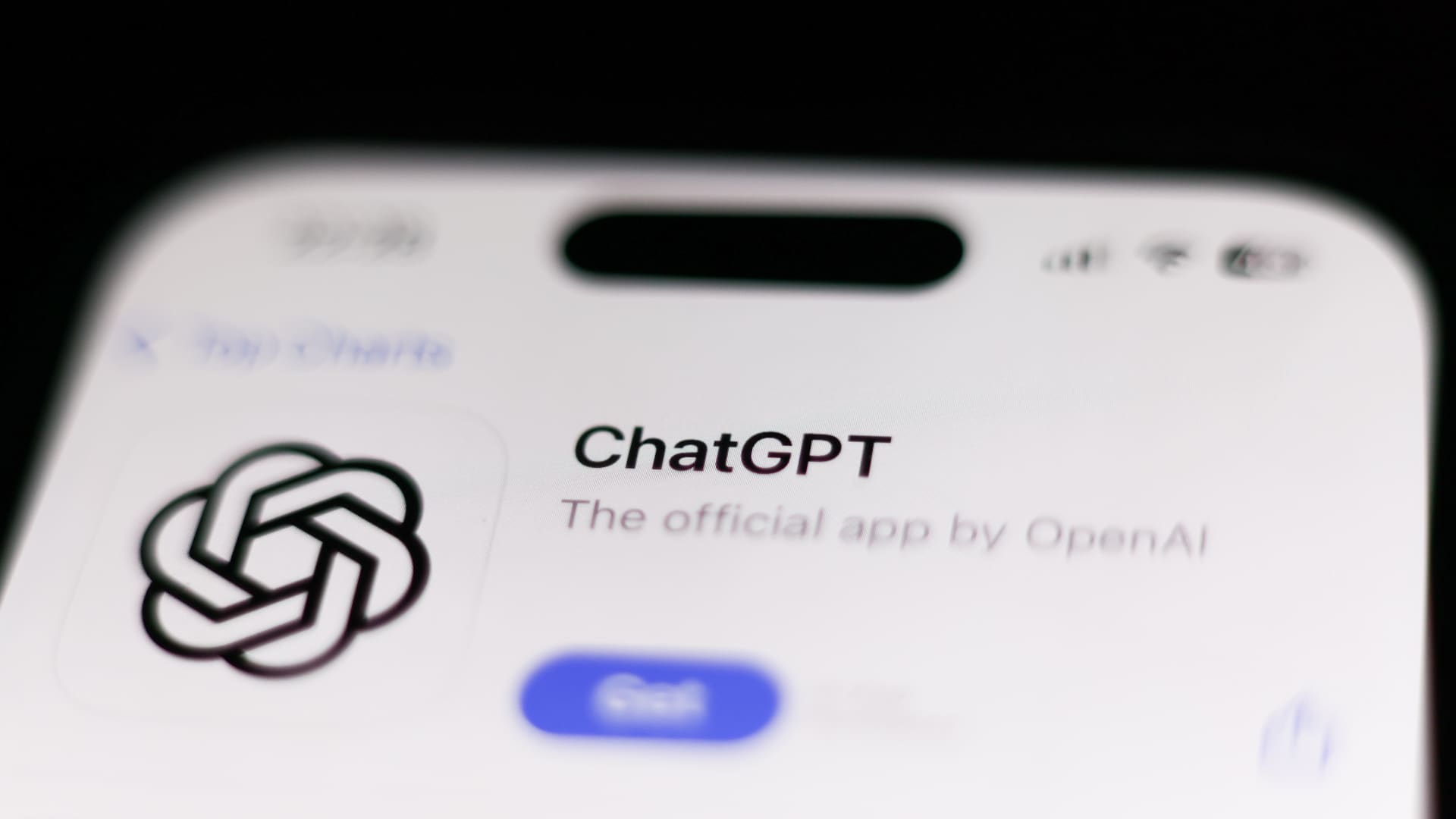Illustration of the ChatGPT App on the iOS App Store displayed on a phone screen.
Nurphoto | Nurphoto | Getty Images
Despite rapid adoption of large language models like OpenAI’s ChatGPT, few comprehensive studies have delved into exactly how the technology is being used in everyday life — that is, until now.
On Tuesday, researchers, including those from OpenAI, released a first-of-its-kind study that examines who was using ChatGPT and for what purposes based on internal messages sent to ChatGPT on consumer plans.
Amongst the key findings from the National Bureau of Economic Research working paper was the surge in non-work related messages, jumping to 73% in June 2025 from 53% a year ago.
In a post on LinkedIn, OpenAI Chief Economist Aaron Chatterji said that the shift was a signal that ChatGPT is becoming part of many aspects of people’s lives.
“We’re still learning how people use AI in the wild, but this trend gives us a glimpse into where the value is and how it’s shifting,” he added.
The study, which has not been formally scrutinized by other researchers, or peer reviewed, was authored by OpenAI’s Economic Research team and Harvard economist David Deming, and said to have drawn on “a large-scale, privacy-preserving analysis of 1.5 million conversations.”
Here is an outline of some of the most notable revelations:
What are the most common use cases?
While ChatGPT can theoretically be used for complex work tasks like coding, the study found that consumer usage of the chatbot has been largely about “getting everyday tasks done,” OpenAI wrote in a blog post announcing the study.
Three-quarters of conversations with ChatGPT monitored by the researchers were determined to have fallen into the three broad categories of “practical guidance, seeking information and writing.”
Practical guidance was found to be the most common use case, with such uses encompassing requests for tutoring and teaching, how-to advice and creative ideation.
However, use cases varied depending on whether the chatbot was being used in the workplace or for personal benefit. For example, writing activities were found to be the most common use case at work, accounting for 40% of work-related messages on average in June.
Meanwhile, rather than just using ChatGPT to write things from scratch, about two-thirds of all writing messages asked the chatbot to perform editing, critiquing and translating for existing text.
The study also looked at ChatGPT usage patterns in the context of “Asking, Doing, and Expressing.”
As of July, about half of all messages fell into the “Asking” category, which researchers said suggests that people value ChatGPT most as an advisor rather than only for task completion.
However, for work-related messages, about 56% were classified as “Doing,” which means the chatbot was used to perform certain job tasks, such as writing.
“Writing is a task that is common to nearly all white-collar jobs, and good written communication skills are among the top ‘soft’ skills demanded by employers,” the paper noted.
The impact that AI models will have on the workplace has been a hot topic since ChatGPT was launched for consumers in November 2022, with growing fears that the technology will be used to replace workers.
However, researchers argued their findings showed that, at least in the case of consumer ChatGPT, it was mostly used to help improve judgment and productivity of workers, rather than replace all their tasks, especially in knowledge-intensive jobs.
Who’s using it?
The study noted that as of July, ChatGPT’s user base had grown to 10% of the world’s adult population.
Meanwhile, the demographic breakdown of these ChatGPT users had shifted, with the chatbot slowly becoming more universal across genders and national borders.
For example, data from January 2024 showed that 37% of users had typically feminine names, among users with names that could be read as either masculine or feminine.
But as of mid-2025, that gender gap was found to have narrowed dramatically, with female adoption consistent with the general adult demographics.
ChatGPT has also become more accessible globally, with especially rapid growth in low- and middle-income countries.
This has resulted in ChatGPT adoption growth rates in the lowest-income countries growing to over 4 times that in the highest-income countries as of May 2025.
Besides offering different paid tiers on its consumer platform, ChatGPT also offers an enterprise product for businesses, API access and a software engineering agent called Codex.
While ChatGPT has experienced explosive growth in recent years, it’s encountering increasing competition from rivals like Elon Musk’s XAI and Google’s Gemini.
Just this week, Gemini took the top spot among free apps on Apple’s App Store, leapfrogging ChatGPT, following the August launch of its “Nano Banana” image editor model.





